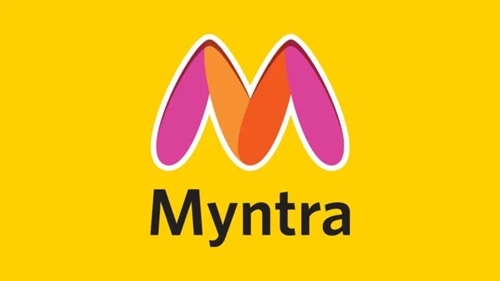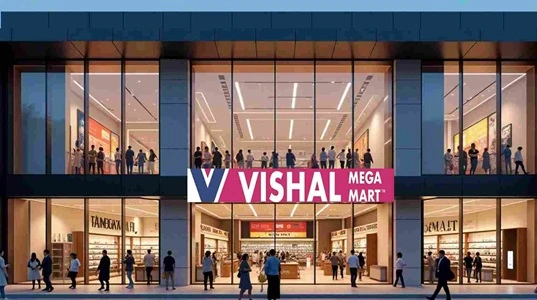On the surface, it might appear to you that Myntra is just an online platform to buy fashion and lifestyle products, and that should be the way it makes money, aka it’s the business model of Myntra, right? But that’s just the half truth, see, there are quite a lot of other ways that Myntra utilizes to make money these days, and it’s far more interesting than you think. So, let’s just get to it.

A Quick Look at Myntra Today
Myntra is among the leading online fashion stores in India. Backtracking to 2007, it aimed at the sales of personalized products such as mugs and T-shirts. However, the idea turned out not to be profitable, and the company redirected its energy towards selling clothes, and the rest is history. The switch really went well for them. Flipkart acquiring Myntra in 2014 turned out to be like fuel to the fire. Since then, the company has reached the stage of a BIG name in the fashion e-commerce market.
| Company/Brand name | Myntra |
| Establishment year | 2007 |
| Headquarters | Bengaluru, Karnataka, India |
| Founder / Owner | Founded by Mukesh Bansal, Vineet Saxena, Ashutosh Lawania; now fully owned by Flipkart Group (Walmart) |
| Industry | Fashion and lifestyle e-commerce |
| Net worth / Last known valuation | About ₹1,220 crore (private-market estimate, 2014) |
| Total revenue in 2024 | ₹5,122 crore (FY 2024 operating revenue) |
How Myntra Makes Its Money?
Myntra doesn’t put all its eggs in one basket when it comes to revenue. It collects money through various channels. Like:
1. Marketplace Commission
Myntra operates an extensive online marketplace that has more than 5,000 sellers and about 10,000 brands listed on the platform. These sellers are required to pay a commission to Myntra, which is generally between 4% and 25%, depending on the product category. In addition, sellers are charged for their use of services such as packaging, shipping, and payment processing.
To boost smaller ticket-size orders, Myntra slashed its commission in June 2025 to 0-1% for products with a price of less than ₹500. However, fees from the marketplace were ₹17.74 billion in 2024, which made it a major revenue stream.
2. Private-Label Brands
Along with its exclusive collection, Myntra owns or collaborates with brands like Roadster, HRX, Dressberry, and quite a few others. Owing to the fact that Myntra oversees everything from creation to delivery, these brands, which are basically for the house, have a higher profit margin, like about 45 to 50%.
Just to show you the scale of it, Roadster was able to pull in ₹1,500 crore worth of sales in 2022 and is still placed amongst the top-selling brands of Myntra.
3. Retail Media (Advertising)
Brands make payments to Myntra to showcase their products via sponsored listings, video content, live shows, and banner placements during sales events. Ad revenue rose 33% year-over-year to ₹712 crore, which is approximately 14% of Myntra’s total revenue, according to the latest figures for 2024.
4. Logistics and Seller Services
Myntra powers the entire supply chain with Smart Logistics and seller services. These have become the leading sources of the company’s revenues. Last year it generated 2,439 crores from logistics and services that constituted 47.6% of the total revenues.
5. Loyalty Program (Myntra Insider)
Myntra’s loyalty scheme, Myntra Insider, has nearly 6.8 million subscribers. These consumers are rewarded SuperCoins with each purchase, which they have the option to utilize in the future. While these members constitute a relatively minor segment of the user base, they are the sales drivers, making up more than 40% of the total sales.
6. Fintech Partnerships
Myntra has entered the fintech space as well. Together with Kotak, it unveiled a co-branded credit card that gives users a 7.5% discount on every purchase. Plus, with the partnership with Twid, customers can make payments using loyalty points accumulated from other programs.
7. Quick Commerce (M-Now)
Myntra came out with M-Now, a 30-minute delivery service for fashion and beauty products, towards the end of 2024. The service was initially launched in Bangalore, and later, by the middle of 2025, it was spread over to Delhi-NCR and Mumbai. This setup generates extra money from delivery charges and also attracts the spontaneous buying of customers, thereby increasing the average order value.
8. Content and Data Services
Myntra is concentrating on content to draw Gen-Z users as well. Elements such as Myntra Minis and Glamstream allow users to access products through videos. Brands are charged for campaign slots in these areas. Besides, Myntra makes money from the distribution of consumer insights and data trends derived from shopping behavior.
The Money Picture in 2024
Here’s the revenue split for FY 2024 (Total Revenue: ₹5,122 crore):
- Logistics Services: ₹2,439 crore (47.6%)
- Marketplace Commission: ₹1,774 crore (34.6%)
- Advertising Revenue: ₹712 crore (14%)
Myntra managed to cut down on its losses quite a bit actually. It changed the situation from losing ₹782 crores in 2023 to making a profit of ₹31 crores in 2024. A total of 60 million users were active on the platform monthly, and the FWD section, targeting Gen-Z, contributed to the doubling of Gen-Z users to 16 million.



